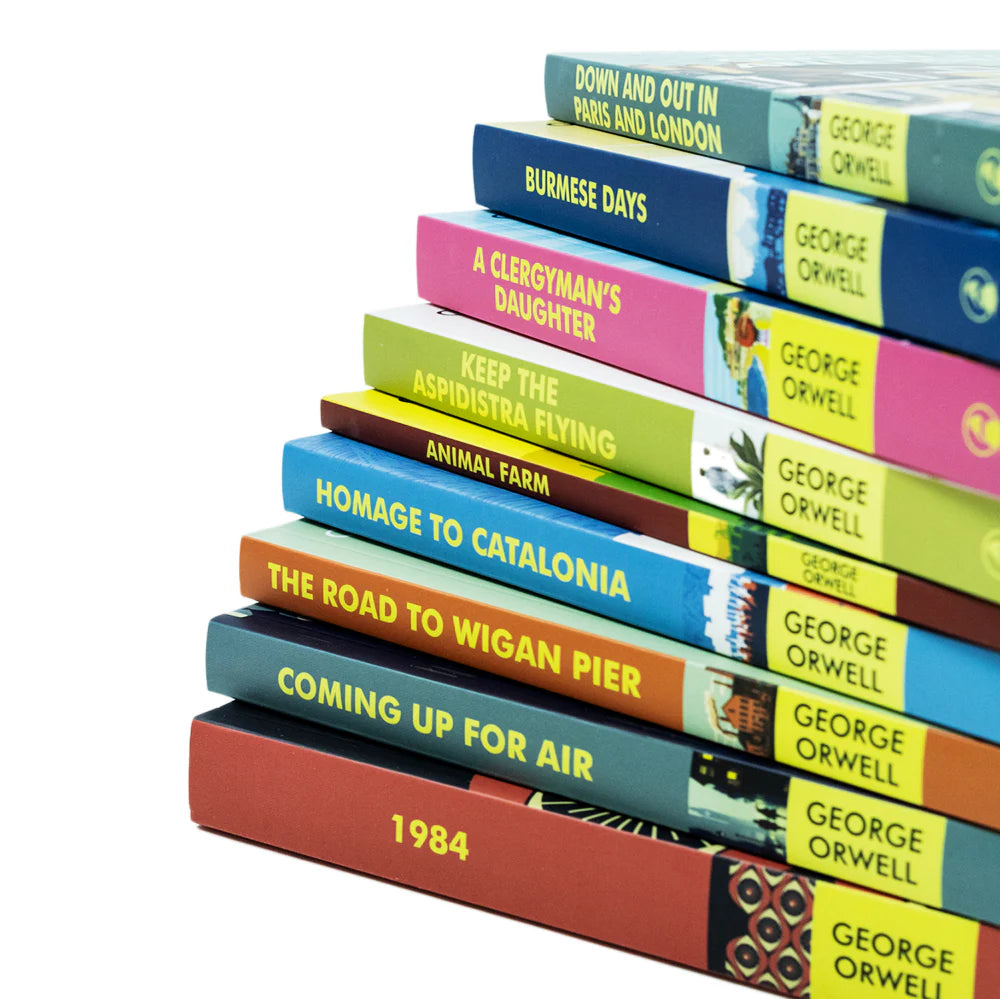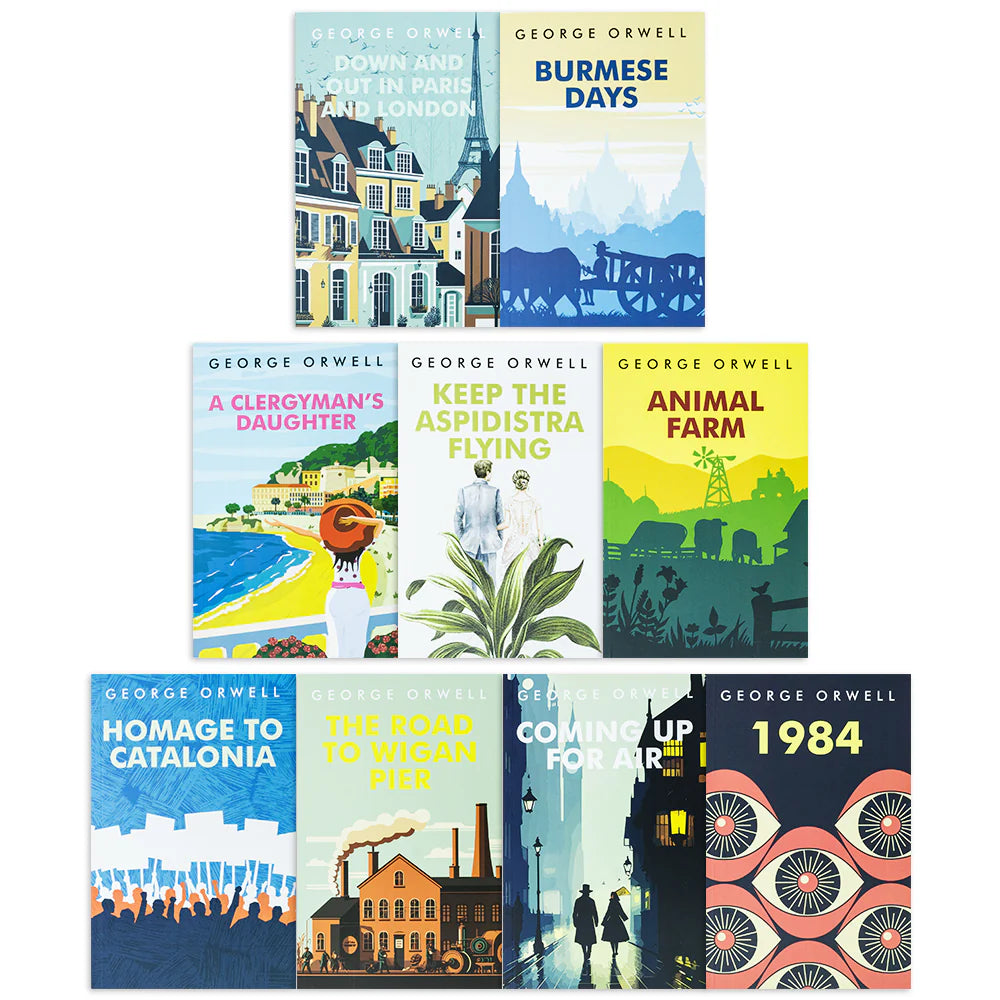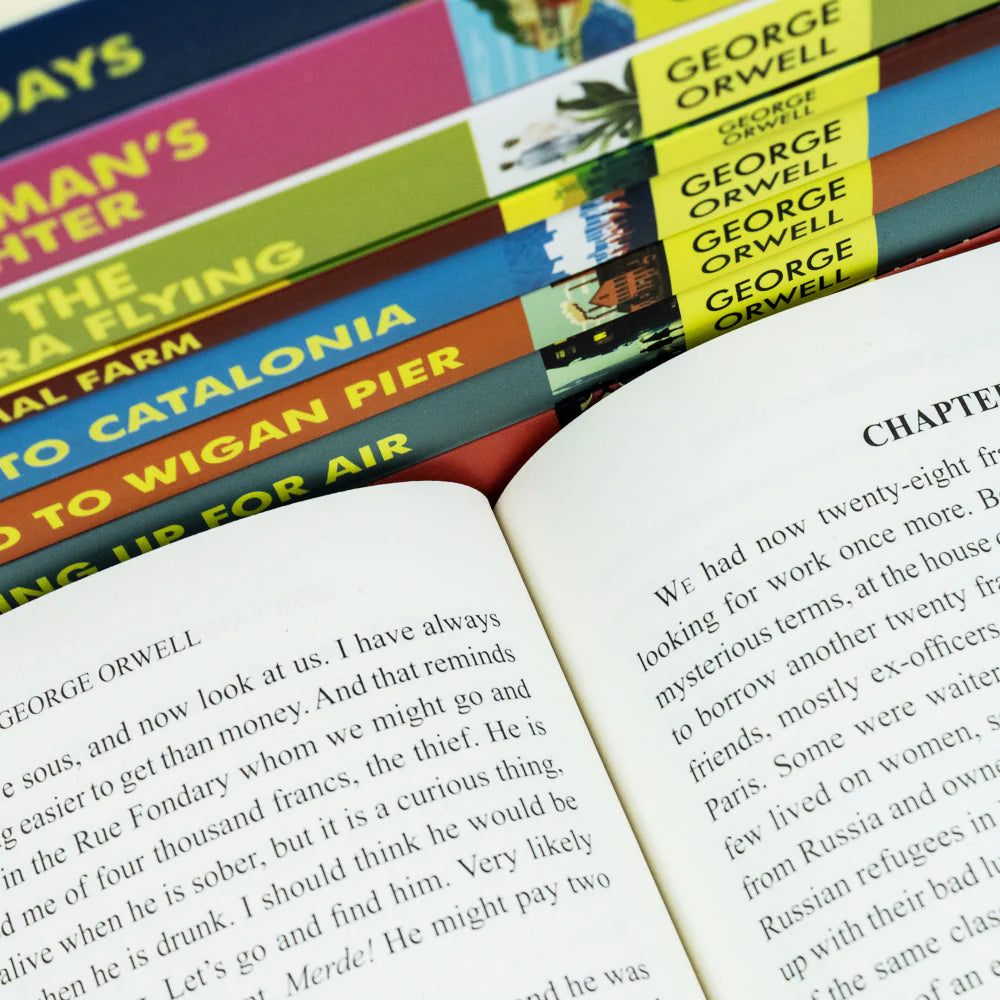The Reading Spa
The Greatest Works of George Orwell 9 Book Set Collection - Homage to Catalonia, Burmese Days, 1984 & More
The Greatest Works of George Orwell 9 Book Set Collection - Homage to Catalonia, Burmese Days, 1984 & More
Couldn't load pickup availability
The "Greatest Works of George Orwell 9 Books Set" provides readers with an extensive collection of the notable literary works of George Orwell, a prolific English writer and journalist. Here's a general overview of the key titles that are included in the set:
Titles in this Set:
Down and Out in Paris and London
Homage to Catalonia,
The Road to Wigan Pier
Burmese Days,
A Clergyman's Daughter
Keeping the Aspidistra Flying
Animal Farm
Coming up for Air
1984
Description:
-
"Homage to Catalonia": Orwell's firsthand account of his experiences during the Spanish Civil War. The narrative reflects Orwell's political beliefs and disillusionment with the internal conflicts among leftist factions.
-
"Burmese Days": Set in colonial Burma, this novel explores themes of imperialism, racism, and the personal struggles of its characters, offering a critical examination of British rule in Southeast Asia.
-
"1984": A dystopian masterpiece that has become a classic of modern literature. "1984" introduces readers to the totalitarian regime of Oceania, where the government, led by the enigmatic figure Big Brother, exercises absolute control over every aspect of citizens' lives.
-
"Animal Farm": An allegorical novella that satirizes the events leading up to the Russian Revolution of 1917 and the subsequent Stalinist era in the Soviet Union. Animals on a farm rebel against their human farmer, only to find themselves facing new oppressors.
-
"The Road to Wigan Pier": A non-fiction work that explores the living and working conditions of the working class in northern England during the 1930s. Orwell combines social observation with personal reflection, providing a powerful critique of economic inequality.
-
"Down and Out in Paris and London": Based on Orwell's own experiences, this autobiographical work details his time living in poverty and working menial jobs in both Paris and London. The narrative sheds light on the harsh realities of destitution and the resilience of the human spirit.
-
"A Clergyman's Daughter" is a novel by George Orwell, first published in 1935. The story revolves around Dorothy Hare, the daughter of Reverend Charles Hare, the clergyman of a small parish in England.
The novel is divided into two distinct parts. In the first part, Dorothy, an unassuming and dutiful clergyman's daughter, leads a monotonous and uneventful life. She is burdened by the responsibilities of her family and her father's parish. The narrative takes a surreal turn when Dorothy experiences a form of amnesia after a traumatic event, leading her to a life of destitution and hardship.
-
"Keep the Aspidistra Flying" is a novel written by George Orwell, first published in 1936. The story centers around Gordon Comstock, an idealistic but disillusioned young man living in London during the 1930s.
Gordon is an aspiring poet who despises the bourgeois values of the society he lives in. He rejects the conventional aspirations of a stable job and financial security, instead choosing a life of poverty and artistic pursuit. To rebel against what he sees as the soul-crushing conformity of middle-class life, Gordon quits his job at an advertising agency and takes on a series of low-paying, menial jobs.
-
"Coming Up for Air" is a novel by George Orwell, first published in 1939. The story follows George Bowling, an insurance salesman living in England during the late 1930s, as he grapples with the changes in society and his own personal discontent.
The novel is set against the backdrop of impending war, and Bowling becomes overwhelmed by a sense of nostalgia for his past. Feeling trapped in a routine life, he yearns for the simplicity and innocence of his boyhood in Lower Binfield. Bowling decides to revisit his hometown, hoping to recapture the idyllic memories of his youth.
Share














